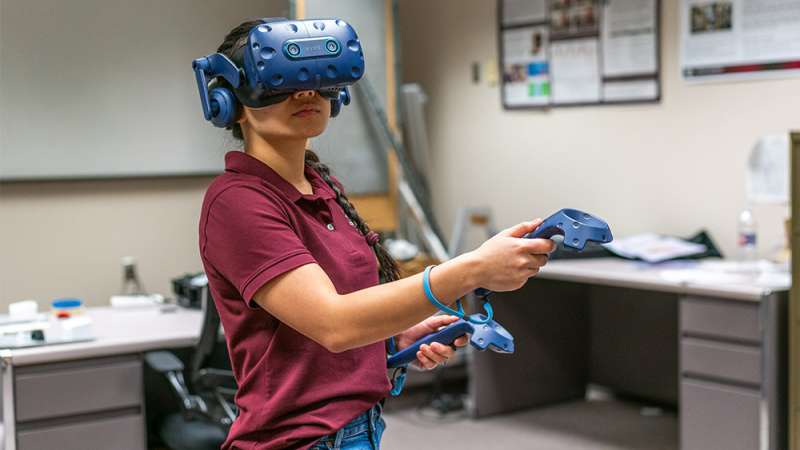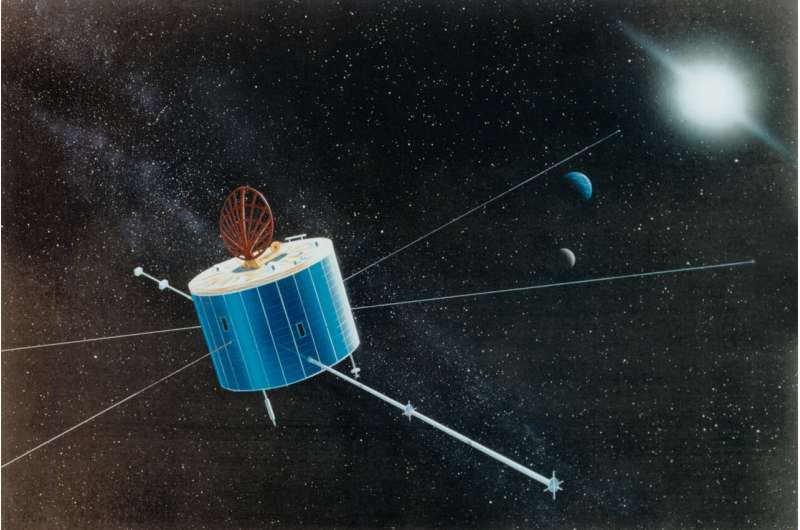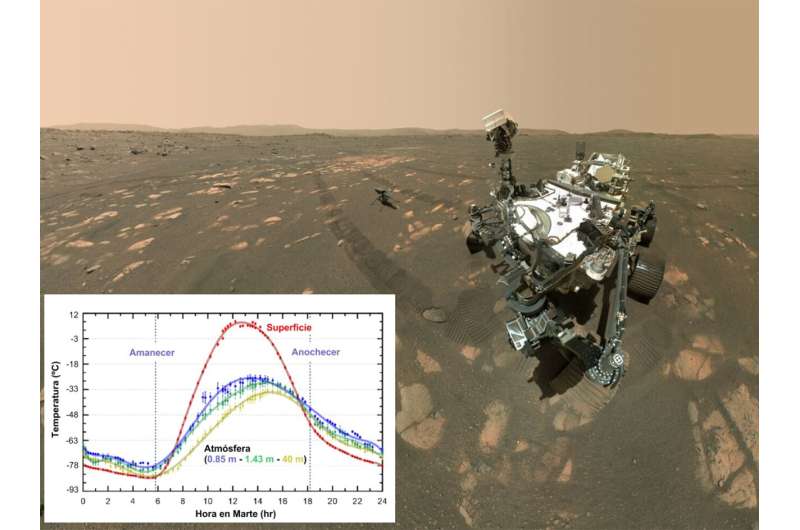
Copernical Team
Incorporating scents into a VR environment suitable for spacefarers

Astronauts are heading back to the moon, and this time they are focusing on establishing the first long-term presence. Afterward, NASA has its sights set on a trip to Mars.
With these long-duration missions ahead, new challenges will have to be accounted for on every front. The moon is about 238,855 miles from Earth, but a trip to Mars for an astronaut means traveling around 140 million miles away and leaving our planet for about three years. Because of this distance, astronauts will also face up to a 20-minute communication delay from Earth to Mars.
NASA's Geotail mission operations come to an end after 30 years

After 30 years in orbit, mission operations for the joint NASA-JAXA Geotail spacecraft have ended, after the failure of the spacecraft's remaining data recorder.
After its launch on July 24, 1992, Geotail orbited Earth, gathering an immense dataset on the structure and dynamics of the magnetosphere, Earth's protective magnetic bubble. Geotail was originally slated for a four-year run, but the mission was extended several times due to its high-quality data return, which contributed to over a thousand scientific publications.
While one of Geotail's two data recorders failed in 2012, the second continued to work until experiencing an anomaly on June 28, 2022. After attempts to remotely repair the recorder failed, the mission operations were ended on November 28, 2022.
"Geotail has been a very productive satellite, and it was the first joint NASA-JAXA mission," said Don Fairfield, emeritus space scientist at NASA's Goddard Space Flight Center in Greenbelt, Maryland, and NASA's first project scientist for Geotail until his retirement in 2008.
The rich meteorology of Mars studied in detail from the Perseverance rover

Perseverance is a NASA autonomous vehicle that arrived at the Jezero Crater (the bed of an ancient, now dried-up lake on Mars) on February 18, 2021. The rover is equipped with seven novel, complex scientific instruments dedicated to exploring the planet's surface in search of signs of possible past life, collecting and depositing samples to be brought back to Earth, testing new technologies for use in human exploration, and studying the planet's atmosphere in detail.
With regard to the aim of studying the atmosphere, the MEDA (Mars Environmental Dynamics Analyzer) instrument has been obtaining novel results. MEDA's lead researcher is José Antonio Rodríguez-Manfredi of the Centre for Astrobiology (CAB) in Madrid, and it has had the participation of a team from the UPV/EHU's Planetary Sciences Research Group. The instrument comprises a set of sensors that measure temperature, pressure, wind, humidity and properties of the dust that is always present in suspension in the Mars atmosphere.
Scientists use laser to guide lightning bolt for first time
 Scientists said Monday they have used a laser beam to guide lightning for the first time, hoping the technique will help protect against deadly bolts - and one day maybe even trigger them.
Lightning strikes between 40-120 times a second worldwide, killing more than 4,000 people and causing billions of dollars worth of damage every year.
Yet the main protection against these bolts from a
Scientists said Monday they have used a laser beam to guide lightning for the first time, hoping the technique will help protect against deadly bolts - and one day maybe even trigger them.
Lightning strikes between 40-120 times a second worldwide, killing more than 4,000 people and causing billions of dollars worth of damage every year.
Yet the main protection against these bolts from a OpenAI, creator of ChatGPT, casts spell on Microsoft
 The hottest startup in Silicon Valley right now is OpenAI, the Microsoft-backed developer of ChatGPT, a much-hyped chatbot that can write a poem, college essay or even a line of software code.
Tesla tycoon Elon Musk was an early investor in OpenAI and Microsoft is reported to be in talks to up an initial investment of $1 billion to $10 billion in a goal to challenge Google's world-dominating
The hottest startup in Silicon Valley right now is OpenAI, the Microsoft-backed developer of ChatGPT, a much-hyped chatbot that can write a poem, college essay or even a line of software code.
Tesla tycoon Elon Musk was an early investor in OpenAI and Microsoft is reported to be in talks to up an initial investment of $1 billion to $10 billion in a goal to challenge Google's world-dominating Intelligent Computing: The state of the art
 Human society on the verge of transforming from an information society to an intelligent society, where optimized computing can autonomously solve practical, real-world problems. Critically, this transition is dependent on the continued development of advanced computing theories and algorithms that impart varying degrees of intelligence to computing systems through autonomous perception, informa
Human society on the verge of transforming from an information society to an intelligent society, where optimized computing can autonomously solve practical, real-world problems. Critically, this transition is dependent on the continued development of advanced computing theories and algorithms that impart varying degrees of intelligence to computing systems through autonomous perception, informa China releases report on remote sensing monitoring for global ecology
 China's Ministry of Science and Technology issued a 2022 annual report on the remote sensing monitoring of the global ecological environment on Tuesday in Beijing. The report contains two topics of "ice, snow, and vegetation change in the Arctic region" and "the production situation of global bulk grain and oil crops and the contribution of multiple cropping and irrigation."
The report aim
China's Ministry of Science and Technology issued a 2022 annual report on the remote sensing monitoring of the global ecological environment on Tuesday in Beijing. The report contains two topics of "ice, snow, and vegetation change in the Arctic region" and "the production situation of global bulk grain and oil crops and the contribution of multiple cropping and irrigation."
The report aim Sidus Space expands commercial data distribution through SkyWatch deal
 Sidus Space, Inc. (NASDAQ:SIDU)has signed an agreement with SkyWatch for use of its TerraStream data-management platform. The agreement is expected to accelerate the expansion of Sidus' commercial data distribution strategy which includes white labeling data for the Company's existing customers as well as driving growth of new data customers.
Serving as a key contributor to the Space data
Sidus Space, Inc. (NASDAQ:SIDU)has signed an agreement with SkyWatch for use of its TerraStream data-management platform. The agreement is expected to accelerate the expansion of Sidus' commercial data distribution strategy which includes white labeling data for the Company's existing customers as well as driving growth of new data customers.
Serving as a key contributor to the Space data Flashes on the Sun could help scientists predict solar flares
 In the blazing upper atmosphere of the Sun, a team of scientists have found new clues that could help predict when and where the Sun's next flare might explode.
Using data from NASA's Solar Dynamics Observatory, or SDO, researchers from NorthWest Research Associates, or NWRA, identified small signals in the upper layers of the solar atmosphere, the corona, that can help identify which regi
In the blazing upper atmosphere of the Sun, a team of scientists have found new clues that could help predict when and where the Sun's next flare might explode.
Using data from NASA's Solar Dynamics Observatory, or SDO, researchers from NorthWest Research Associates, or NWRA, identified small signals in the upper layers of the solar atmosphere, the corona, that can help identify which regi Amazonas Nexus at Cape Canaveral for final processing
 The Amazonas Nexus, the new satellite of Redeia's operator HISPASAT, is now in Cape Canaveral, Florida ahead of its targeted launch on a SpaceX Falcon 9 next month. The fleet's new satellite has been transferred from the installations of Thales Alenia Space in Cannes (France), where it was manufactured before being transported to the space centre on board of an Antonov cargo plane. The satellite
The Amazonas Nexus, the new satellite of Redeia's operator HISPASAT, is now in Cape Canaveral, Florida ahead of its targeted launch on a SpaceX Falcon 9 next month. The fleet's new satellite has been transferred from the installations of Thales Alenia Space in Cannes (France), where it was manufactured before being transported to the space centre on board of an Antonov cargo plane. The satellite 
